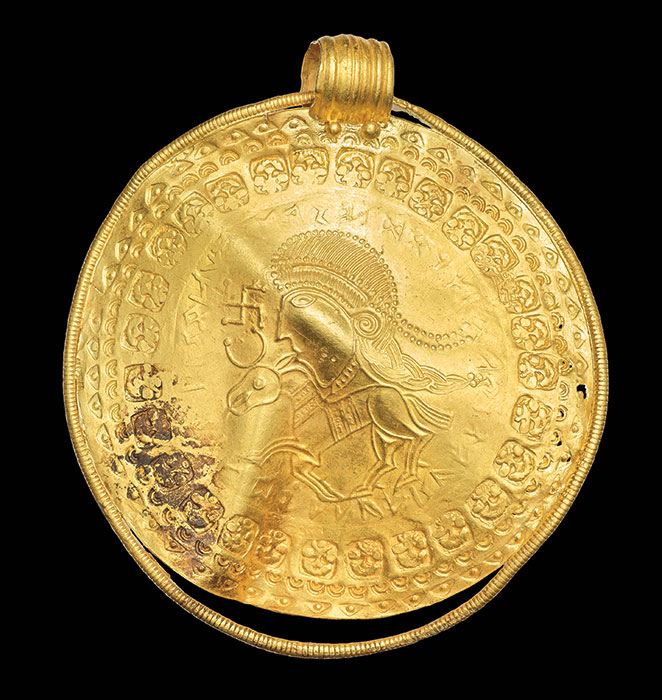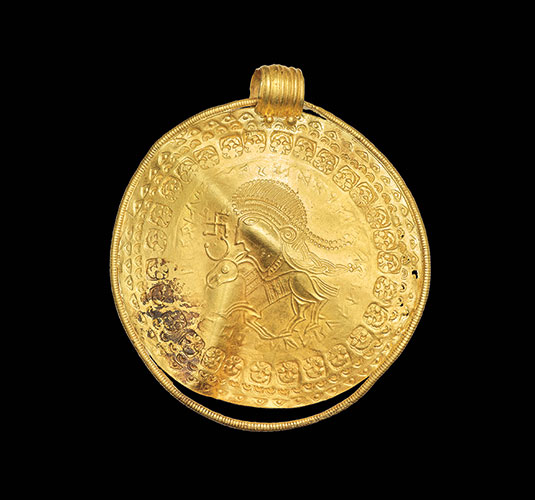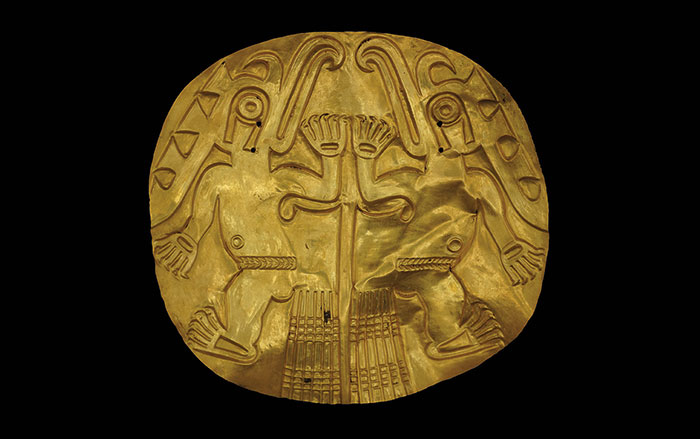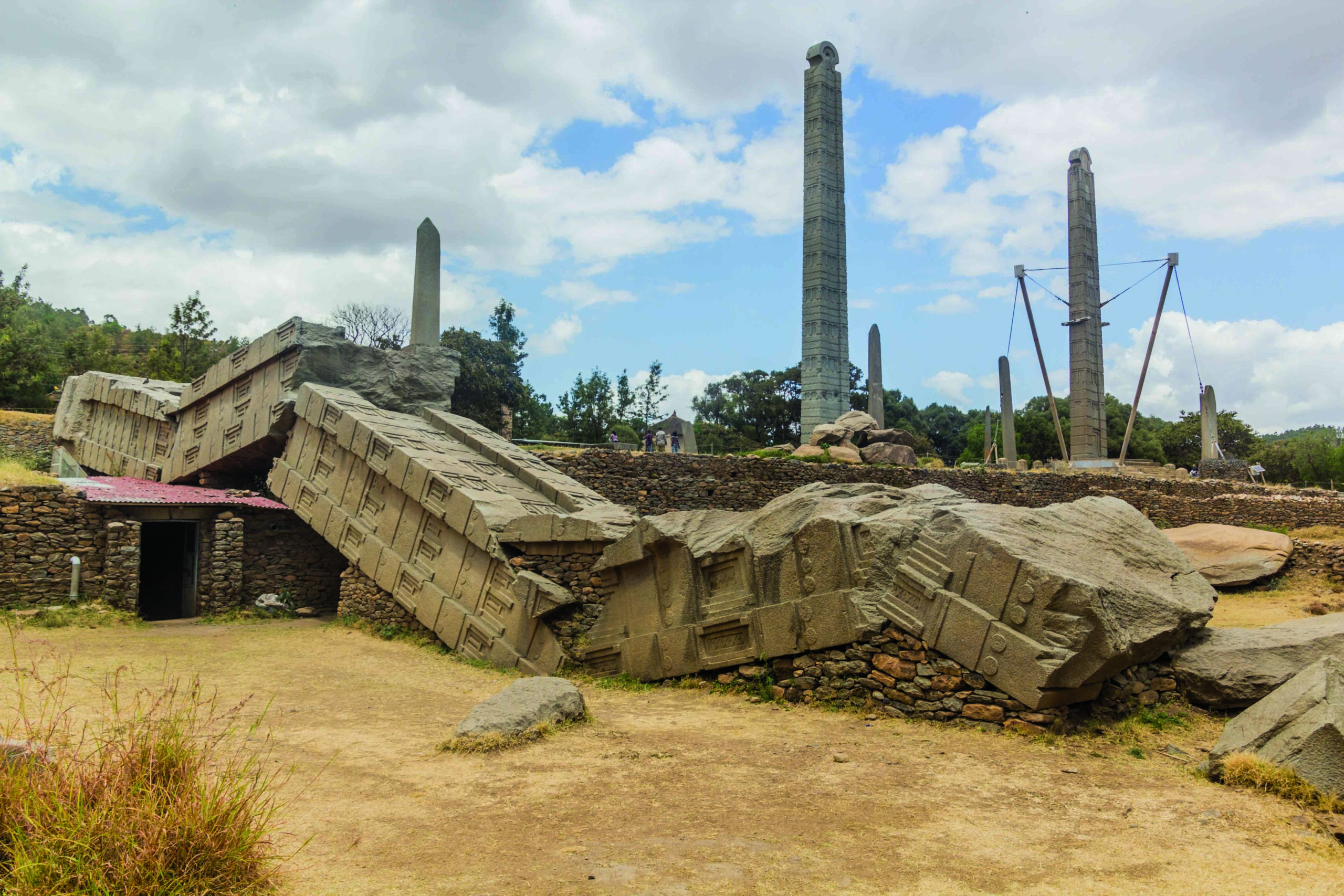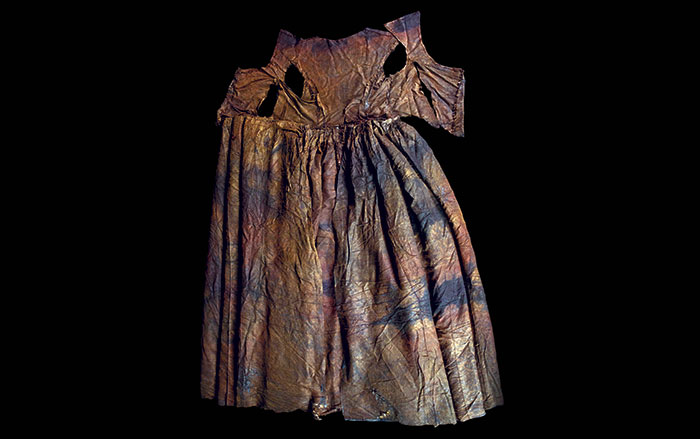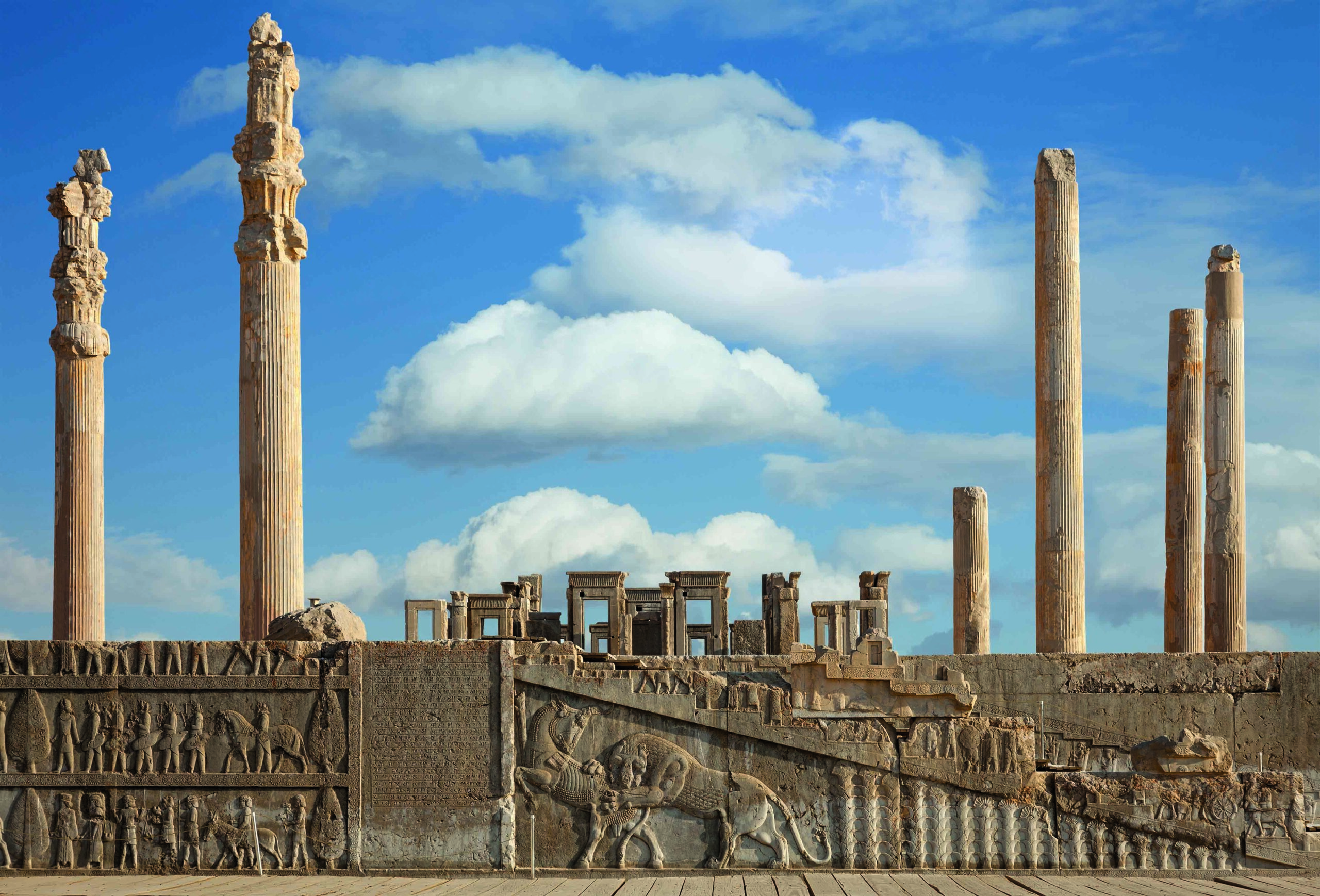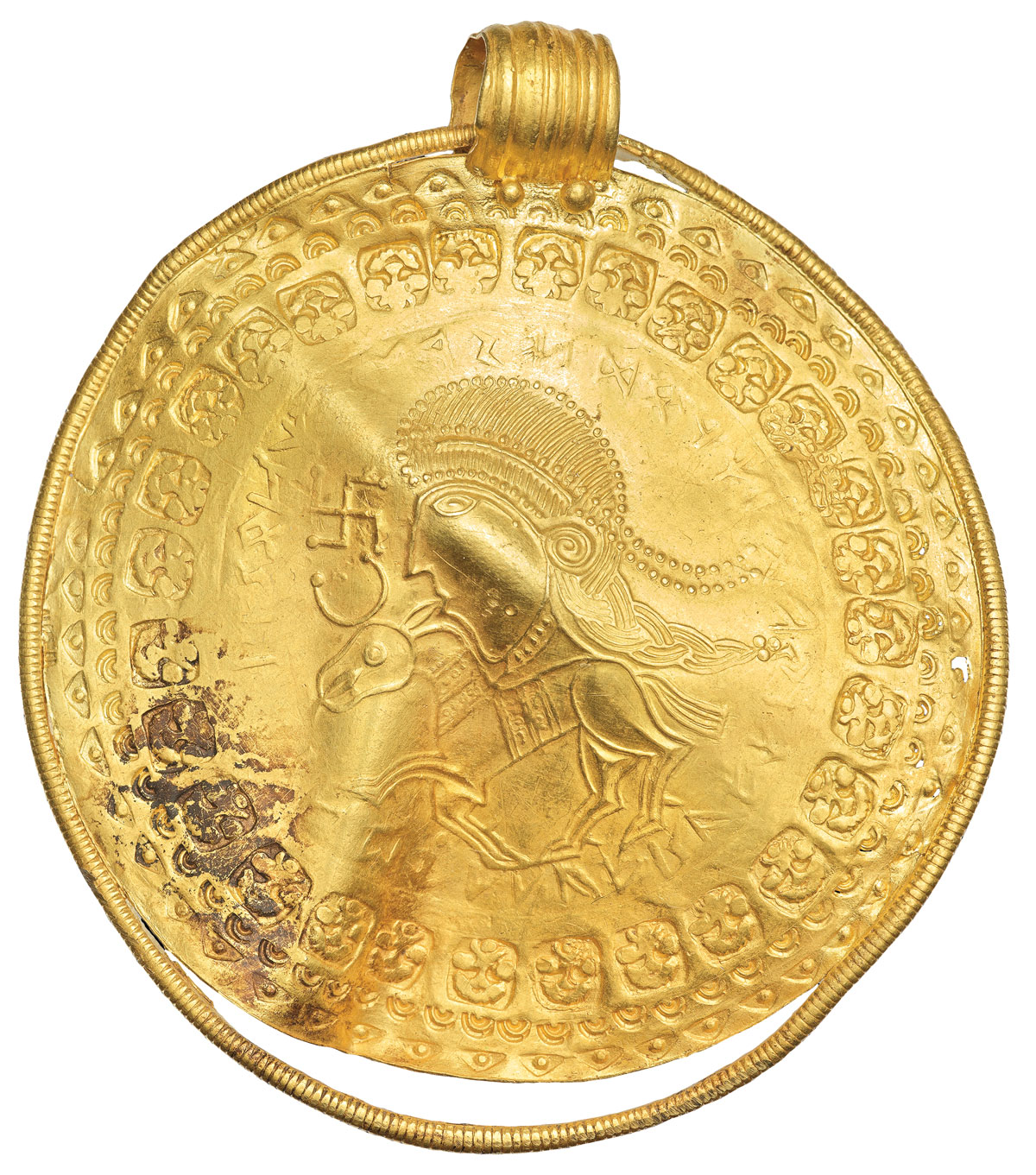
What is it?
Bracteate, or ornamental disk
Culture
Norse
Date
Early 5th century A.D.
Material
Gold
Found
Vindelev, Denmark
Dimensions
2 inches in diameter, weight 0.02 ounces
When she first saw the small shining disk soon after it was discovered in the town of Vindelev in 2021, runologist Lisbeth Imer of the National Museum of Denmark had an inkling of what its inscription might say— but it was extremely hard to read. Though expertly rendered, the runes are only about one-sixteenth of an inch tall, and Imer had to wait until she could examine them under a microscope. The inscription is unusually long, and also very worn, possibly because the disk sat in the cool Danish soil for more than 1,500 years, or perhaps, Imer says, because the words were so sacred that whoever wore it as a pendant touched them again and again. Furthermore, the language used, known as Proto-Norse, is difficult to translate because so little of it has been seen. “Every time we encounter a new find containing a Proto-Norse inscription—which is very rare—we have to compare it with sister languages and reconstruct back from the Viking language, Old Norse,” Imer says.

Along with Krister Vasshus, a linguist at the University of Bergen, Imer was finally able to decipher the 34 or 35 tiny runes, and determined that they read, in part, “He is Odin’s man.” This is the oldest written reference to the Norse god of war and of the dead ever found, dating to 150 years earlier than the next known mention of Odin. Imer explains that it is the god’s relationship to the man depicted on the disk, whom the inscription names as “Jaga” or “Jagaz,” and who she believes was a king or local governor, that is so significant. “With this discovery,” she says, “we have a text that tells us that the person depicted on the bracteate was a king of divine descent.” The ruler’s divine ancestry is also reinforced by the swastika, representing the sun, and a crescent, probably representing the moon, in front of his face. “What’s so important to learn,” Imer explains, “is that religion was embedded in rulership at this early point in Norse history.”


